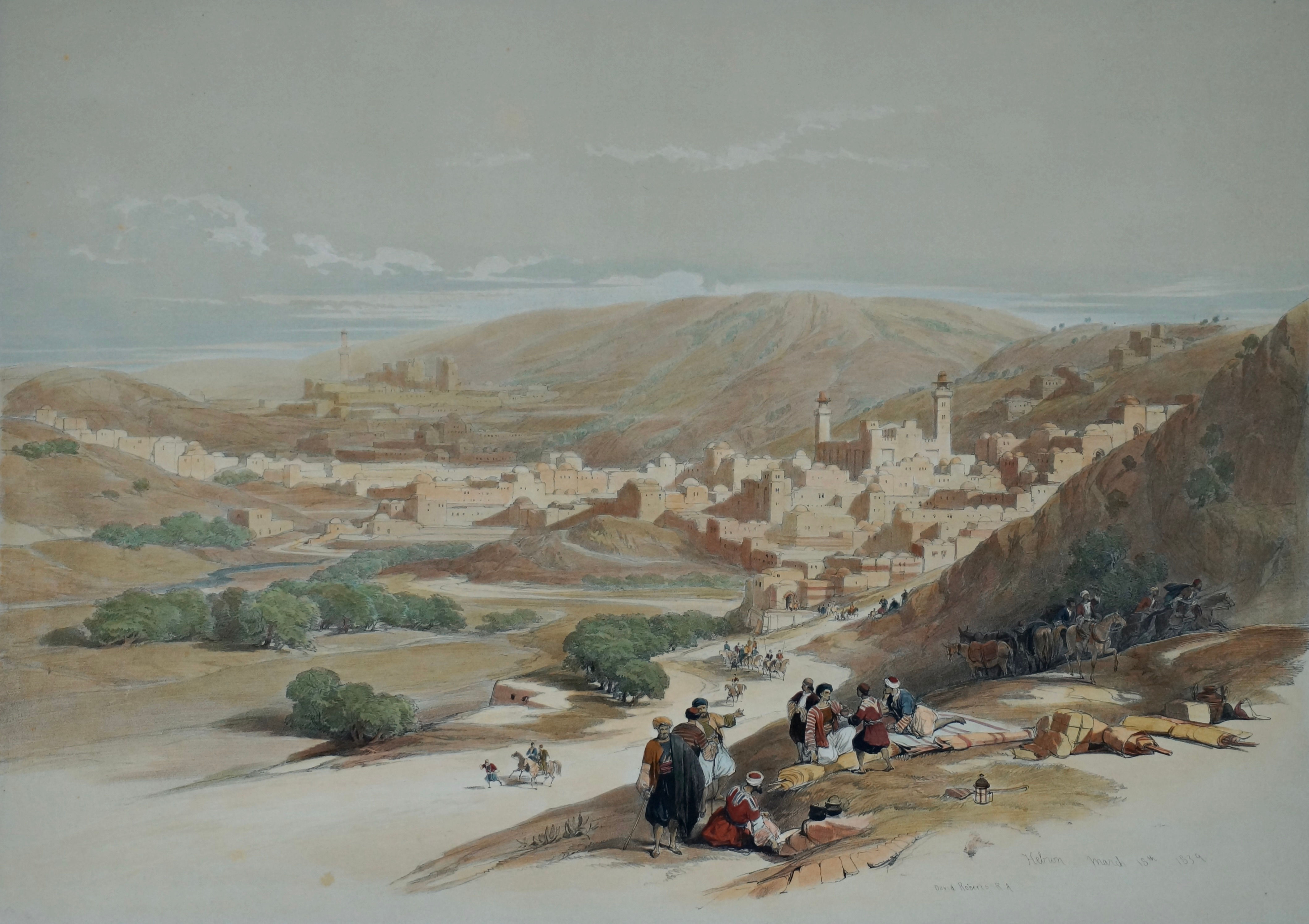Plate 55 Hebron - After David Roberts
Roberts stayed in Hebron for three days from the 16th to 18th March 1839. He wrote on the 16th that 'approaching Hebron, the hills are covered with vines and olive-trees. On turning round the side of a hill, Hebron first bursts upon you. The situation is beautiful, and the houses, gleaming brightly in the noonday sun, reminded me of England. The children, who came out to meet us, were healthy and pretty, their blooming countenances very unlike the squalid children of Egypt.' [1] Continuing on the 17th Roberts said 'to-day I made two coloured sketches of the town, but could not get admission to the mosque containing the tombs of Abraham, Isaac, and Jacob. The twon contains 1300 families, four of which are Jewish, and one is Christian. From the latter we received the most marked attention, and we spent the night under their hospitable roof.' [2]
'Located in the heart of Judea, amidst a hilly landscape, Hebron is probably one of the oldest cities in the world, the site of ancient strife and impassioned devotion. Within the massive city walls built by King Herod, in fact, stands a church - later transformed into a mosque- which was built around 1195 atop the Cave of Makhpelah, where it is believed that Abraham, Isaac, Jacob, and their wives Sarah, Rebeccah, and Leah are buried. According to the Bible, this city was founded seven years before Tanis, that is, in the eighteenth century B.C., and it was near this city that the Biblical oak grove of Mamre stood, where Abraham lived.
The city was sacked by Joshua, and was the home of David - who was proclaimed King of Israel here - and the center of the revolt of Absalom. Rehoboam fortified the city, but it was destroyed by the Romans during the great revolt. Even after its destruction, however, the Jews never entirely abandoned it. The Crusaders who called Hebron "Presidium Sancti Abrahe," designated the town an episcopal see in 1168; just twenty-one years later, however, the city fell back into the hands of the Muslims. The period of Mameluke rule constituted for the Jews a period of respite from persecution. Local lore has it that the prosperous business of manufacturing glass, in which Hebron still excels, was introduced by Venetian Jews, immediately following the Crusades.' [3]
The drawings and watercolours from this tour by David Roberts of the Holy Land and Egypt were collated together into folios and released over a seven year period by the publisher F.G. Moon from 20 Threadneedle Street London. This lithograph is an original First Edition version published on the 2nd January 1843.
Medium: Original First Edition Lithograph, with later hand-colouring on thick woven paper.
Full Plate 55.
Inscribed l.r. 'David Roberts R.A.' and 'Hebron march 18th 1839', 35.5 x 50.5cm, mounted.
References:
[1] David Roberts Journal, 16th March 1839.
[2] Ibid., 17th March 1839.
[3] Fabio Bourbon (ed). Yesterday and Today: The Holy Land. Swan Hill Press: London, 1997, p.102. Translated by Antony Shugaar.
Condition report: the lithograph is generally in very good condition for its age. There are few instances of time staining including a small circular mark towards the bottom of the lithograph (see photographs). There is also a very faint pencil insciption in the bottom left hand-corner.


